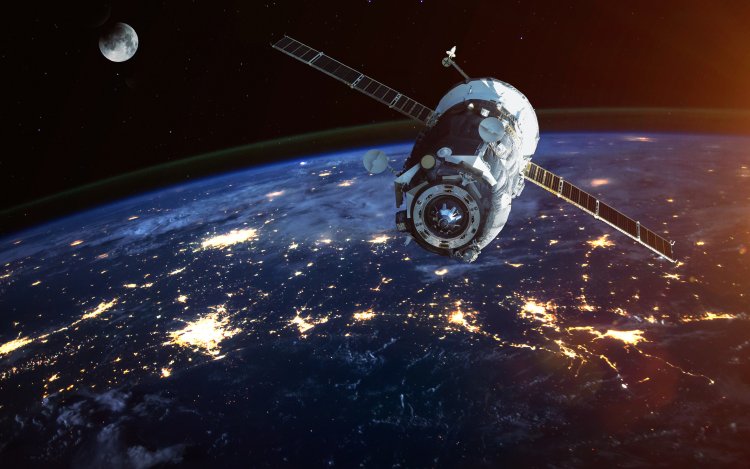On October 27, 1967, the Soviet unmanned spacecraft of the Soyuz – Kosmos-186 type was launched. After that, a second spacecraft, Kosmos-188, was launched into the same orbit. They faced an important task – the world’s first automatic docking. On October 30, the third day after the launch, it was completed.
The docking was carried out using the Soviet Igla (“needle”) spacecraft rendezvous and docking system. It was created at the Scientific Research Institute of Precision Instruments (NII-648) headed by Armen Sergeevich Mnatsakanyan. According to the chief designer of the system, Yevgeny Vasilyevich Kandaurov, who worked at this research institute and had been engaged in missile homing for many years, they were approached by the leadership of OKB-1, headed by Sergey Pavlovich Korolev, with a proposal to create equipment for docking and berthing of spacecraft. The task was new, difficult, and almost impossible.
“You didn’t make me a manned ship, but a real antenna carrier,” [Sergey Pavlovich] Korolev was indignant when we showed a poster of the general appearance of the Soyuz, on the body of which only antennas were deliberately drawn from all external accessories,” said academician of the Russian Academy of Sciences, designer of rocket and space technology Boris Yevseevich Chertok, who worked at the Research Institute-648, shared his memories in the book Rockets and People.
Even though due to secrecy, Soviet “drones” were depicted in print not as they looked, these images demonstrate the principle of joining pin-cone spacecraft – active-passive docking units. The Kosmos-186 and Kosmos-188 spacecraft were designed according to two types, depending on the tasks – active and passive. The “active” spacecraft Kosmos-186 – the “antenna carrier” – was equipped with three sets of antennas: observation antennas, which provided a preliminary search for the second ship, gyro-stabilized antennas, which, after detecting the ship, set the auto-tracking mode, and antennas which were necessary for the docking itself. The other, “passive” ship, should be oriented in the direction of the active object. The docking should take place as slowly as possible so that the ships do not damage each other during collision. In addition to the speed of movement of objects, the angle of their mutual orientation with an accuracy of one degree is also important. As Yevgeny Kandaurov said, disbelief in the achievability of this task accompanied the entire process of creating the system: “Even the venerable scientist, designer of autonomous control systems, academician N.A. Pilyugin told the developers: “You guys are trying in vain. Nothing good will come of it.”
Despite skeptical assessments, everything worked out. The Russian Space Systems website quotes Vladimir Vladimirovich Riman, an eyewitness to the success of the Igla spacecraft rendezvous and docking system. Today, he is the chief designer of the scientific and technical complex for the creation of radar equipment for remote sensing of the Earth at the Scientific Research Institute of Precision Instruments, and back then he was a young engineer:
“Needlers!” was the name given at the Institute to the engineers of the department for the creation of systems for mutual measurements of the parameters of the relative motion of spacecraft working at the stand, where the Igla was born in creative agony – the equipment for mutual measurements of the positions of two spacecraft for their docking. There were many of us: young, intelligent, who worked selflessly, for days, but it just so happened that I was especially lucky. I was the first of the young people who had a chance to observe the process of docking two spacecraft in real-time at the Baikonur Cosmodrome. And not only to observe but also to comment on the work of the Igla.”
With each space mission, not only those who go into space become heroes, but also those who make it possible. Those who create durable materials that can withstand space loads, who assemble spacecraft, ensure their launch, uninterrupted operation to achieve scientific objectives, determine their future destinies. The cost of error in space missions is very high. An example of this is the ISS – it is listed in the Guinness Book of Records as the most expensive object built by man. It is also an example of where automatic docking may be required.
Depending on the design and purposes of the spacecraft, docking today helps not only to control one ship with the help of another, but also to ensure the connection of the electrical circuits of two spacecraft, the transition of astronauts from one to another through an existing hatch or open space, and then, after undocking, continue the flight separately. It was the docking mechanism that made it possible to create long-term orbital stations when it is possible to live and work in space for a long period.
The process of automatic docking of spacecraft has been tuned for decades, but it remains one of the most complex and important technical operations in space.
Sources:
Image: forplayday / ru.123rf.com
50 years of the first automatic docking: how the Igla was created. RSS
Igla: Mnatsakanyan’s radio-technical docking system. B.E. Chertok. Rockets and People
41 years ago, for the first time in the world, the spacecraft was automatically docked in space. Roscosmos
Kosmos 186 and Kosmos 188. Wikipedia
Docking and berthing of spacecraft. Wikipedia
Igla (spacecraft docking system). Wikipedia
Space rendezvous. Wikipedia






















